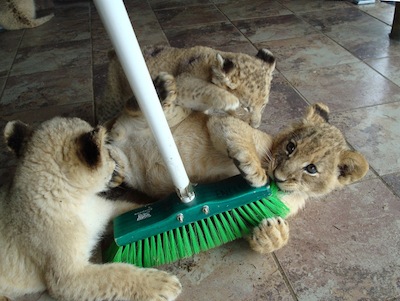The Mercedes-Benz Museum, Stuttgart, Germany
By Iain Shankland
 Traveling to Stuttgart from any part of Germany is easy, thanks to the excellent autobahn and rail system. On our most recent visit we took in the very impressive Mercedes-Benz Museum.
Traveling to Stuttgart from any part of Germany is easy, thanks to the excellent autobahn and rail system. On our most recent visit we took in the very impressive Mercedes-Benz Museum.
As you walk up to the front doors of the museum your anticipation grows for what lies inside the great glass building, and it certainly doesn’t disappoint. It doesn’t matter if you are a car enthusiast or not -- there are plenty of interesting barrier-free displays to keep adults and children occupied for hours. Displays are in German as well as English, and guided tours are presented in an abundance of languages thanks to the (included) portable self-guided tour device with headphones. For a very reasonable €8 (approximately $10, and children are €4) you get hours of enjoyment, a self-guided tour, and a nifty Mercedes-Benz lanyard as a souvenir -- not bad at all!
 Your tour starts from the top floor of the exhibits after you’re shuttled via elevator through time to the 19th century. Stepping off the elevator you begin winding your way down the floors through displays that allow you to get up-close and inside many of the iconic vehicles that Mercedes-Benz has produced. From the very first horses and buggies to safety and utility vehicles, racing cars, and everyday vehicles for the masses, there’s plenty to see. Posters and artwork adorn the walls of the museum, taking you through the timeline of the vehicles you see and helping you to understand which world events were happening in relation to the vehicles on display.
Your tour starts from the top floor of the exhibits after you’re shuttled via elevator through time to the 19th century. Stepping off the elevator you begin winding your way down the floors through displays that allow you to get up-close and inside many of the iconic vehicles that Mercedes-Benz has produced. From the very first horses and buggies to safety and utility vehicles, racing cars, and everyday vehicles for the masses, there’s plenty to see. Posters and artwork adorn the walls of the museum, taking you through the timeline of the vehicles you see and helping you to understand which world events were happening in relation to the vehicles on display.
Without rushing, we took about four hours to go through the museum and that included stopping for a reasonably-priced lunch. The tour ends on the ground floor at the gift shop where you can purchase everything Mercedes-Benz. Prices start at €1 (just over a dollar) and climb to several thousands of euros for unique one-of-a-kind items.
Hours are Tuesday-Sunday, 9 a.m.-6 p.m. (closed Monday). For more information visit http://www.mercedes-benz-classic.com
There is a Mercedes-Benz plant right next to the museum that offers separate tours for those interested in watching some of the luxury cars being built, but we saved that for another trip at another time. Also close by is Wilhelma, the Stuttgart zoo (which we understand is awesome), and Mercedes-Benz Arena (the training facilities and stadium for the local soccer team, VfB Stuttgart). And, if you’re in Stuttgart at the end of September/beginning of October, you HAVE to visit the second-largest Oktoberfest in the world -- the Volksfest. It’s an experience you’ll never forget.
If you’d like to purchase this article for your publication, click here to contact the author directly.
 Do you have a soft spot for Africa’s big cats? Do you find safaris exhilarating but secretly wish you could jump out of the jeep to interact with the cuddly lion cubs? If you’re nodding your head, then this article is for you.
Do you have a soft spot for Africa’s big cats? Do you find safaris exhilarating but secretly wish you could jump out of the jeep to interact with the cuddly lion cubs? If you’re nodding your head, then this article is for you.  She recommended Ukutula, in a malaria-free zone, an hour and 45 minutes from Johannesburg airport. They provided three lovely meals per day and a very comfortable chalet (not a tent) with a hot shower. A basic two-week package (excluding airfare) currently costs $1,530 (based on two sharing) or $1,740 (for single occupancy). Transfers and excursions cost extra. Two weeks minimum is preferable. The local currency (ZAR/rand) can fluctuate greatly so prices listed in dollars will vary. You may also want to bear in mind that nights are chilly July through August.
She recommended Ukutula, in a malaria-free zone, an hour and 45 minutes from Johannesburg airport. They provided three lovely meals per day and a very comfortable chalet (not a tent) with a hot shower. A basic two-week package (excluding airfare) currently costs $1,530 (based on two sharing) or $1,740 (for single occupancy). Transfers and excursions cost extra. Two weeks minimum is preferable. The local currency (ZAR/rand) can fluctuate greatly so prices listed in dollars will vary. You may also want to bear in mind that nights are chilly July through August. If smelly work and early starts aren’t your thing, you can still visit Ukutula as a guest. You can stay in their luxury chalets (they sleep 3-6) and just pop over to play with a small cub or go for a walk to a water hole with a small group of teenage lions. Watching them run around freely is incredibly relaxing and safer than it sounds. An experienced guide will accompany you and about six other visitors and explain all about lion psychology.
If smelly work and early starts aren’t your thing, you can still visit Ukutula as a guest. You can stay in their luxury chalets (they sleep 3-6) and just pop over to play with a small cub or go for a walk to a water hole with a small group of teenage lions. Watching them run around freely is incredibly relaxing and safer than it sounds. An experienced guide will accompany you and about six other visitors and explain all about lion psychology.  On entering the center building, it became obvious my guide’s use of the word “factory” was accurate, but it was also intentionally tongue-in-cheek. Although there is no sign of the machinery or automation one might expect in a traditional factory, and the interior is about the size of an average pizza parlor in the U.S., the building does indeed house a factory -- and the product is melt-in-your-mouth, buttery, shortbread-like biscochos, or biscuits.
On entering the center building, it became obvious my guide’s use of the word “factory” was accurate, but it was also intentionally tongue-in-cheek. Although there is no sign of the machinery or automation one might expect in a traditional factory, and the interior is about the size of an average pizza parlor in the U.S., the building does indeed house a factory -- and the product is melt-in-your-mouth, buttery, shortbread-like biscochos, or biscuits. If you are on an equatorial quest to straddle the hemispheres, to balance an egg on end, or to compare the direction water swirls down a sink drain, be sure to stop along the way for some fresh biscuits in Cayambe, a stop that will add a very tasty experience to your travels within Ecuador.
If you are on an equatorial quest to straddle the hemispheres, to balance an egg on end, or to compare the direction water swirls down a sink drain, be sure to stop along the way for some fresh biscuits in Cayambe, a stop that will add a very tasty experience to your travels within Ecuador.